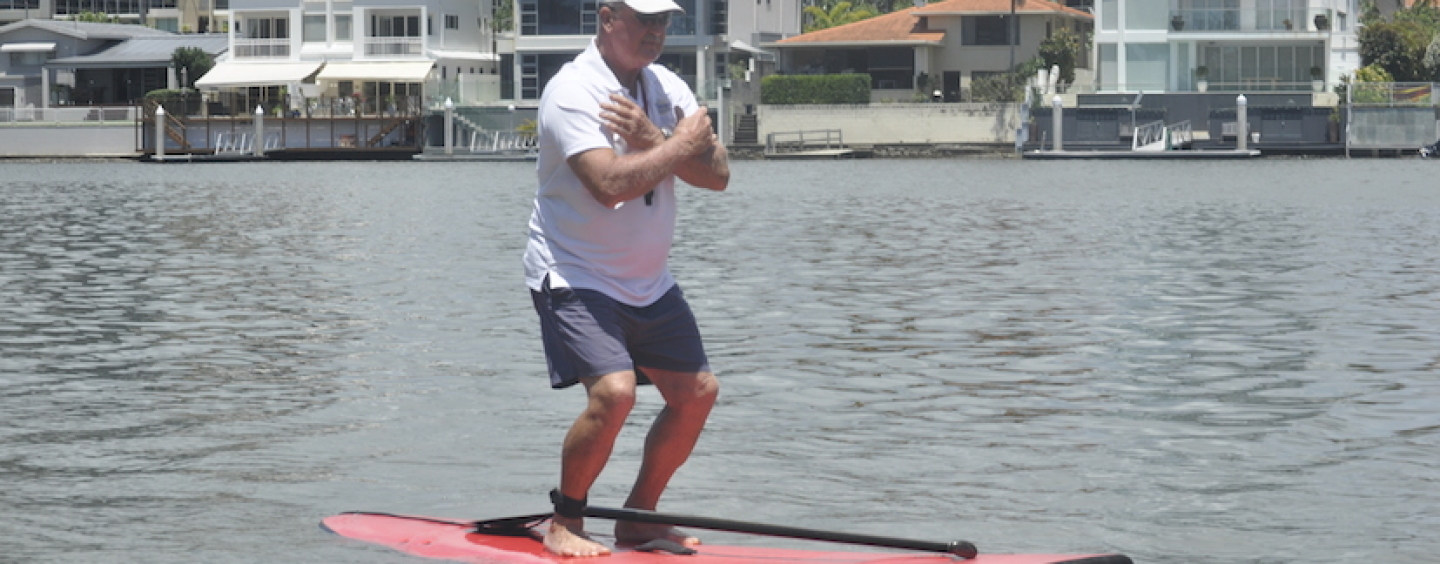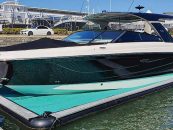The SUP craze is here to stay for sure. Inshore or offshore, the opportunities for SUP is boundless. While SUP has gained popularity on the Gold Coast and beyond, there are still unique offerings that can make the SUP experience a bit more different.
Meet the master of SUP-Tai Chi
Brad Holmes trained at the Australian Academy of Tai Chi/Qigong (pronounced chi-gong) in 1991. He has been a believer of Chinese medicine and holistic body treatment since the 80s when he learned accupuncture, so training for Tai Chi/Qigong is something that came naturally for him.
Brad explains, “Tai Chi means to get back in the balance. Qigong means ‘energy work’. So, Tai Chi and Qigong is the balance of work and energy. It is a light and gentle exercise and very easy to remember.”
In 2004, he began getting into SUP. He was already a surfing instructor and so he started teaching SUP as well. He has been teaching Tai Chi and Qigong since 2005. He has then integrated Tai Chi exercises with SUP, and still continues to offer the program.
The girls give it a try
So here we are, three mums, having had a go at SUP once or twice before, deciding to meet the SUP-Tai Chi master at Budds Beach on an early Friday morning. Brad gives us a briefing about SUP, and then lets us have about 15 minutes getting familiar with our SUP boards and paddles, and paddling on our own on the Nerang River. We start with knee paddling first, and then we move on to standing up. Brad only uses soft-safety boards for SUP to ensure that any danger or risk of injury in case of an accident is avoided.
We are lucky that the boaties are very courteous, and really avoid making a lot of wake as we paddle along, trying to get the confidence up. Brad keeps on encouraging us, “Don’t think about it too much. Just flow with the water. If you fight against water, it fights against you. And always be loose, agile and flexible.” He also reminds us to keep knees bent and relaxed, and to keep looking ahead and not on the board.
Once we have more confidence on the board, it is time to be introduced to Tai Chi. Brad shows us the movements while we are standing on the beach. We are to do the “lotus position” on the SUP board. With knees bent and steady, our arms and upper body do all the gentle exercises. And then, we are ready for the Tai Chi on board!
We all paddle out away from the beach. Then, Brad asks us to place our paddles on our boards between our feet. With knees slightly bent and the board slowly rocking with the soft waves, we all get into the moment, and do the “lotus” exercises gently without as much thought that we are floating on the river. Our boards are moving where the water was taking us. And as we continue to the exercises, we let go of our thoughts and fears of falling off our board.
The slow movement of our boards underneath our feet creates a challenge in conducting the “lotus” exercises, but as we keep repeating the exercises, not mindful where our boards are taking us, we are taken into a natural sense of calm and balance—which is what Tai Chi is all about.
Anyone can do SUP-TaiChi
Brad shares that some of his clients do not know how to swim. So he encourages knee-paddling first. And when they get more confident, they easily learn how to stand up. Tai Chi is also a form of preventative therapy. “It calms the breath, calms the heart and focuses the mind,” explains Brad.
He also says that one does not need to be fit to be able to do SUP or SUP-Tai Chi. “At least 50 percent of my clients are not physically active. I do tailor the sessions to my client’s personal needs and wants.”
Brad offers SUP coaching on Budds Beach every day. He is patient and is calm with his students and ensures that the experience is always something special. “As a teacher, I am always a student, because every student I teach, teaches me a new and different way of how to teach the next one.”
By Roselle Tenefrancia






























